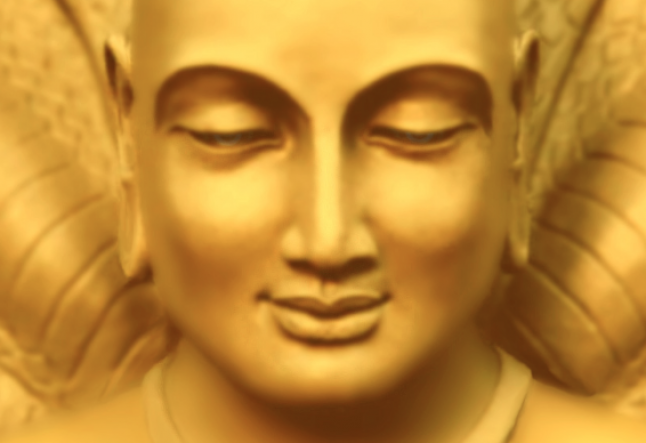What Are the Yoga Sutras?

I remember my first yoga class vividly. I went in expecting to just learn some cool poses and maybe gain a bit of flexibility.
What I didn’t expect was to be introduced to the Yoga Sutras of Patanjali—a text that has nothing to do with physical poses, at least not in the way I imagined.
My teacher read aloud from the Sutras: “Yoga is the stilling of the fluctuations of the mind.” In that moment, I felt a mixture of intrigue and confusion. Wasn’t yoga all about the physical practice? And what were these “fluctuations”?
If you’ve ever felt that yoga is more than just a workout—that it has the power to bring about something deeper—then Patanjali’s Yoga Sutras are what you’re looking for.
Often overlooked in modern yoga studios, these ancient texts offer us profound wisdom on how to navigate our thoughts, relationships, and even our purpose in life. Let’s dig into their teachings together and see how they could become a guiding compass for your wellness journey.
Historical Context and Authorship
The Yoga Sutras were composed by the sage Patanjali, a figure shrouded in mystery and reverence. Scholars believe that Patanjali lived around the 2nd century BCE, although exact dates are difficult to pinpoint.
The Yoga Sutras are a compilation of 196 aphorisms, or concise statements, that distill the essence of yoga philosophy and practice. The Yoga Sutras were compiled by the sage Patanjali in the early centuries CE.
Patanjali’s work did not emerge in isolation. It was part of a rich tapestry of Indian philosophical thought that included the Vedas, Upanishads, and other classical texts.
The Yoga Sutras draw from these sources, synthesizing their teachings into a coherent system that addresses the nature of the mind, the process of self-realization, and the path to spiritual liberation.
The Yoga Sutras are considered a synthesis of various traditions, integrating concepts from Samkhya and Buddhism.
The historical context of the Yoga Sutras is crucial for understanding their depth and significance. During Patanjali’s time, India was a vibrant center of intellectual and spiritual activity.
Various schools of thought, including Buddhism and Jainism, were flourishing, each offering different perspectives on the nature of existence and the path to enlightenment.
Scholars have noted striking similarities between Patanjali’s Yoga Sutras and the teachings in Buddhist texts. Patanjali’s Yoga Sutras provided a systematic approach to yoga that could be practiced by anyone, regardless of their religious or philosophical background.
Philosophical Roots and Influences
The Yoga Sutras are deeply rooted in classical yoga philosophy, particularly in the philosophical tradition of Samkhya, one of the oldest schools of Indian philosophy. Samkhya teaches that the universe is composed of two fundamental realities: prakṛti, the material world, and puruṣa, the pure consciousness or the true self. Patanjali defined the universe as two realities: purusha and prakriti.
Understanding this distinction is key to understanding the Yoga Sutras and the practice of yoga itself. The goal is to disentangle ourselves from the illusions of the material world and realize our true nature as pure consciousness.
The Yoga Sutras also draw heavily from other Indian philosophical texts, such as the Bhagavad Gita. Patanjali, the author of the Yoga Sutras, synthesized these teachings to create a comprehensive guide that can be used to understand the nature of reality and the human condition.
This synthesis of both yoga practices and philosophical principles provides a clear path to achieving inner peace and self-realization. The Yoga Sutras accept the division of the world into twenty-five tattvas or principles of Samkhya, yet diverge from early Samkhya by adding the principle of Isvara.
For many of us, the language of these ancient texts can feel a bit intimidating. But at its core, the Yoga Sutras are about simplifying our inner world—about finding stillness amid the noise of daily life. They offer timeless wisdom, making them just as relevant today as they were thousands of years ago.
The Eight Limbs of Raja Yoga
The heart of the Yoga Sutras lies in its description of the eight limbs of Raja Yoga. These eight limbs provide a step-by-step framework for achieving a state of yoga—meaning union or harmony. Here they are:
Yamas (Ethical Disciplines): These are the moral guidelines, like non-violence (ahimsa) and truthfulness (satya), that help us interact harmoniously with others. Ahiṅsā, or non-violence, is singled out as the most important Yama. Renunciation of possessions is the ability to see the problems caused by hoarding.
Niyamas (Personal Observances): These are personal habits, such as cleanliness (saucha) and contentment (santosha), that cultivate a disciplined and balanced life.
Asanas (Physical Postures): These are the poses we typically associate with yoga, designed to prepare the body for meditation by developing strength and flexibility.
Pranayama (Breath Control): Breathwork helps calm the nervous system and focus the mind, bridging the body and spirit.
Pratyahara (Withdrawal of the Senses): This is the practice of turning inward, disconnecting from external distractions to focus on the inner self.
Dharana (Concentration): Concentration is about developing a one-pointed focus, an essential precursor to meditation.
Dhyana (Meditation): Meditation involves sustained concentration, where the mind becomes still and focused. The last three limbs focus on the inner experience of consciousness.
Samadhi (Absorption or Enlightenment): The ultimate goal, where the practitioner experiences a profound connection to pure consciousness, transcending the ego.
In addition to these eight limbs, kriya yoga is another significant system within the Yoga Sutras, emphasizing principles of self-discipline, self-study, and surrender to a higher power.
Each of these limbs is intended to be practiced in succession, building upon the foundation laid by the previous one. Together, they guide us toward a state of balance, peace, and, ultimately, self-realization.
Ashtanga Yoga and the Yoga Sutras

The term Ashtanga translates to “eight limbs,” and it is from the Yoga Sutras that this system of yoga gets its name. Unlike the physical practice commonly known today as Ashtanga Yoga, which is a rigorous sequence of poses, Patanjali’s Ashtanga Yoga encompasses a complete lifestyle approach.
It weaves together ethical living, yoga asana for physical discipline, and meditative practices to lead us toward greater awareness and liberation.
By applying the teachings of Ashtanga Yoga, we are not just working on our physical bodies. We are also cultivating clarity, reducing the ego’s hold over our lives, and connecting with something larger than ourselves. It’s a holistic practice that invites us to look beyond the surface and discover our deeper potential.
Key Concepts and Teachings
The Yoga Sūtras emphasize the importance of understanding both our own nature (svabhava) and the nature of the world around us (prakṛti). This journey inward is not about escaping reality but about seeing it more clearly.
The text teaches that the ultimate goal of yoga is to achieve a state of pure consciousness (kaivalya), in which the individual self (jiva) is liberated from the cycle of birth and death. It’s about attaining a deep sense of freedom and fulfillment, one that isn’t reliant on external circumstances.
One of the foundational teachings is the idea of vrittis, or the fluctuations of the mind. These are the thoughts, emotions, and habits that cloud our perception.
The practice of yoga, as described in the Yoga Sūtras, is meant to still these fluctuations so that we can experience our true selves without distraction or distortion.
The term ‘yoga’ in the Yoga Sutras refers to the cessation of modifications of the mind. This process requires discipline and patience, but the rewards—a calmer mind, greater clarity, and deeper joy—are profound.
The Yoga Sūtras also outline the importance of ethics and morality in yoga practice. The Yamas and Niyamas are the first two limbs of the eightfold path and serve as the foundation for all other practices. They teach us how to live in harmony with ourselves and others, encouraging us to cultivate virtues like non-violence, honesty, and contentment.
Ethics and the Yoga Sutras
The Yamas are the ethical disciplines that guide how we interact with others:
Ahimsa (Non-violence): Practicing kindness and compassion toward all living beings.
Satya (Truthfulness): Being honest in our words and actions.
Asteya (Non-stealing): Respecting others’ time, energy, and belongings.
Brahmacharya (Celibacy or Moderation): Using our energy wisely and avoiding overindulgence. The practice of celibacy is further refined as avoiding interactions with the opposite sex as objects of desire.
Aparigraha (Non-possessiveness): Letting go of greed and the need to control.
The Niyamas are personal observances that support our inner growth:
Saucha (Cleanliness): Maintaining purity of body, mind, and environment.
Santosha (Contentment): Finding satisfaction in what we have.
Tapas (Austerity): Cultivating discipline and resilience.
Svadhyaya (Self-study): Reflecting on our thoughts, actions, and spiritual texts.
Ishvara Pranidhana (Devotion to God): Surrendering to a higher power or purpose.
These ethical guidelines help us lead a life of integrity, which in turn supports our practice of meditation and self-discovery. By embodying these principles, we create a solid foundation for exploring deeper aspects of yoga.
The Yoga school incorporates these ethical disciplines and personal observances, guided by ancient texts and the integration of principles like the yamas and niyamas, to facilitate the journey towards enlightenment and self-realization.
Meditation and the Yoga Sutras
Meditation is a central theme in the Yoga Sutras. It is through meditation that we can quiet the mind and experience our true nature.
The practice of Dhyana (meditation) involves cultivating stillness and sustaining focused attention.
This is where the earlier limbs, like Pratyahara (withdrawal of the senses) and Dharana (concentration), come into play—they prepare us to sit in meditation without being overwhelmed by distractions.
The Yoga Sutras offer guidance on how to overcome common obstacles to meditation, such as distraction and mental agitation. Patanjali describes different techniques, including the use of mantras or focusing on the breath, to help us stay present and centered. Ultimately, meditation leads us to Samadhi, a state of profound inner peace and unity, where we experience a deep connection to pure consciousness. The yoga tradition emphasizes the foundational role of ethical practices and the pursuit of enlightenment, intertwining philosophy and practical techniques of meditation.
Meditation is not about emptying the mind but about becoming fully present with what is. It’s about observing without judgment, letting thoughts come and go without getting caught up in them. In a world that often pulls our attention in countless directions, the practice of meditation is a radical act of self-care—a way to reclaim our inner peace and cultivate resilience.
Theism and the Yoga Sutras
The Yoga Sutras also explore the concept of Theism, particularly through the idea of Ishvara (God or a higher power).
Patanjali introduces Ishvara as a special kind of purusha—one that is untouched by the limitations of the material world and karma. In this context, Ishvara represents an ideal that can guide practitioners on their spiritual journey.
The concept of Ishvara Pranidhana, or devotion to a higher power, is one of the Niyamas and is emphasized throughout the Yoga Sutras.
It is not about blind faith but about surrendering our ego, recognizing that there is something greater than ourselves. This surrender helps to quiet the fluctuations of the mind and allows us to connect more deeply with our true selves.
For many practitioners, the idea of surrender can be challenging. It requires letting go of the need to control every aspect of our lives and instead trusting in a higher power or the flow of the universe.
Whether one views Ishvara as a deity, the universe, or simply the essence of goodness, the practice of devotion can be profoundly transformative. It helps us cultivate humility, reduce anxiety, and find peace in the face of uncertainty.
The Yoga Sutras teach that by focusing on Ishvara, we can attain a state of one-pointed focus and clarity, which ultimately leads to Samadhi.
This focus acts as an anchor, giving us something stable to hold onto as we navigate the complexities of life. In this way, theism in the Yoga Sutras is less about religious dogma and more about finding a source of strength and guidance on our spiritual path.
Commentaries and Interpretations
Over the centuries, the Yoga Sutras have been the subject of numerous commentaries and interpretations, each adding layers of meaning and insight to Patanjali’s original text. One of the earliest and most influential commentaries is the “Yoga Bhashya” by Vyasa, which dates back to around the 5th century CE.
Vyasa’s work is considered essential for understanding the Yoga Sutras, as it provides detailed explanations and clarifications of Patanjali’s aphorisms.
In the medieval period, scholars like Vachaspati Mishra and Vijnanabhikshu further expanded on Vyasa’s commentary, offering their own interpretations and insights.
These commentaries helped to preserve and transmit the teachings of the Yoga Sutras through the ages, ensuring their relevance and accessibility to successive generations of practitioners. The essential similarities between the Samkhya and Patanjali’s Yoga system are evident despite some differences.
In modern times, the Yoga Sutras have been interpreted by a diverse array of teachers and scholars from different cultural and philosophical backgrounds. Figures like Swami Vivekananda, B.K.S. Iyengar, and T.K.V. Desikachar have brought the teachings of the Yoga Sutras to a global audience, each emphasizing different aspects of the text according to their own understanding and experience.
These various commentaries and interpretations highlight the richness and adaptability of the Yoga Sutras. They show how Patanjali’s teachings can be understood and applied in different contexts, making them a living tradition that continues to evolve and inspire.
Applying the Yoga Sutras to Yoga Practice

The Yoga Sutras provide a comprehensive framework for understanding the principles and practices of yoga. They remind us that yoga is not just about the physical postures but about transforming our entire way of being.
By integrating the eight limbs of Raja Yoga into our daily lives, we can create a balanced practice that nourishes not only our bodies but also our minds and spirits.
Whether it’s through the physical discipline of Asanas, the breath control of Pranayama, or the introspection of Svadhyaya, the Yoga Sutras offer us tools to deepen our practice and cultivate greater self-awareness. They encourage us to approach yoga as a lifelong journey—one that is as much about who we are off the mat as it is about what we do on it.
The teachings of the Yoga Sutras can also help us navigate the challenges of modern life. In moments of stress or uncertainty, we can draw upon the wisdom of the Yamas and Niyamas to guide our actions, or use meditation to find stillness amidst the chaos. By applying these teachings, we can live more authentically, with greater compassion and clarity.
Impact on Modern Yoga Practices
The influence of the Yoga Sutras on modern yoga practices cannot be overstated. While many people today associate yoga primarily with physical postures, the philosophical teachings of the Yoga Sutras provide a deeper framework for understanding and practicing yoga as a holistic discipline.
Yoga has been practiced on the Indian subcontinent for over 4000 years.
In contemporary yoga classes, elements of the Yoga Sutras are often woven into the practice, whether explicitly or implicitly. Teachers may reference the Yamas and Niyamas as ethical guidelines for living, or incorporate Pranayama and meditation techniques that align with Patanjali’s teachings.
The emphasis on mindfulness, self-awareness, and inner peace that is central to the Yoga Sutras resonates strongly with modern practitioners seeking more than just physical fitness.
Moreover, the Yoga Sutras have inspired various styles of yoga that emphasize different aspects of the practice.
For example, Ashtanga Yoga, as popularized by K. Pattabhi Jois, is named after the eight limbs of yoga described by Patanjali. This style integrates physical postures, breath control, and meditative practices in a way that reflects the comprehensive approach of the Yoga Sutras.
The enduring relevance of the Yoga Sutras in modern yoga practice speaks to their timeless wisdom. They remind us that yoga is not just about what we do on the mat, but about how we live our lives. By integrating the teachings of the Yoga Sutras, we can cultivate a practice that nurtures our body, mind, and spirit, helping us to navigate the complexities of modern life with greater clarity and compassion.
Practical Examples of Applying the Yoga Sutras in Daily Life
Applying Ahimsa (Non-violence) in Relationships: Think about a time when someone upset you—perhaps a colleague criticized your work or a friend let you down. Instead of reacting in anger, take a step back, breathe, and choose a response rooted in compassion.
This practice of Ahimsa not only helps maintain harmony but also deepens your empathy.
Using Pranayama for Stress Relief: When you’re feeling overwhelmed, try the 4-7-8 breath technique—inhale for four counts, hold for seven, and exhale for eight. It’s a simple but powerful way to activate your parasympathetic nervous system, reducing anxiety and bringing clarity to the present moment.
Meditation as Self-Care: Meditation doesn’t have to be a long, formal practice. Even taking five minutes during your lunch break to sit quietly, focus on your breath, and let go of distractions can help you reset and approach the rest of your day with greater calmness and intention.
Ishvara Pranidhana in Daily Life: Surrendering control doesn’t mean giving up—it means trusting in the process. For example, if you’re working on a project and it isn’t going as planned, remind yourself to put in your best effort and then let go of the outcome. Trust that the universe, or your higher power, has your back.
Svadhyaya (Self-study) for Personal Growth: Journaling is an excellent way to practice Svadhyaya. Take time each evening to reflect on your day—your actions, thoughts, and emotions. This kind of self-reflection can help you identify patterns, understand your triggers, and make more conscious choices moving forward.
Asana Practice as a Mirror: Use your physical practice to observe your inner dialogue. If you find yourself struggling with a challenging pose, notice how you talk to yourself. Are you frustrated, or can you approach the challenge with curiosity and kindness? This awareness is key to bringing yoga off the mat and into your daily interactions.
By integrating these practical examples, the teachings of the Yoga Sutras become not just theoretical knowledge but actionable wisdom.
The path laid out in Patanjali’s yoga sutra, whether through kriya yoga, meditation, or asana, is ultimately about cultivating a more conscious, balanced, and fulfilling life—one that allows us to connect with our own true nature and live in harmony with the world around us.
Conclusion
The Yoga Sutras of Patanjali offer more than just philosophical insights—they provide a practical guide for living a meaningful life.
From the ethical teachings of the Yamas and Niyamas to the meditative practices that lead to Samadhi, each aspect of the Sutras helps us peel away the layers that obscure our true selves. They remind us that yoga is not merely about what happens on the mat but about how we approach every moment of our lives.
By embracing the eight limbs of Raja Yoga and applying the wisdom of the Yoga Sutras, we can cultivate a deeper understanding of ourselves and the world around us.
The Sutras guide us toward inner stillness, harmony, and an unwavering sense of peace that transcends the ups and downs of daily life. Let these teachings inspire you to explore yoga as a holistic journey—one that nurtures not only your body but also your mind and spirit.
Whether you are new to yoga or a seasoned practitioner, the Yoga Sutras can serve as a beacon, illuminating the path toward self-discovery and fulfillment.
So, take a breath, dive into the practice, and let the wisdom of these ancient teachings guide you on your journey to a more balanced and connected life.
FAQs
What do the Yoga Sutras mean?
The Yoga Sutras are a collection of 195 concise aphorisms that outline the principles and practices of yoga. They serve as a guide for understanding the philosophy of yoga and applying it to achieve mental and spiritual well-being.
What are the four sutras of yoga?
The four main chapters (or padas) of the Yoga Sutras are: Samadhi Pada (the state of absorption), Sadhana Pada (the practice), Vibhuti Pada (powers and manifestations), and Kaivalya Pada (liberation and freedom).
What are the Yoga Sutras and who wrote them?
The Yoga Sutras are a foundational text of yoga philosophy, written by the sage Patanjali. They compile ancient teachings into a systematic framework that guides the practice of yoga, both on and off the mat.
What are the teachings of the Yoga Sutras?
The Yoga Sutras teach about the eightfold path of yoga, ethical disciplines, meditation practices, and the goal of achieving mental clarity and pure consciousness. They provide practical wisdom for stilling the mind and attaining inner peace.



